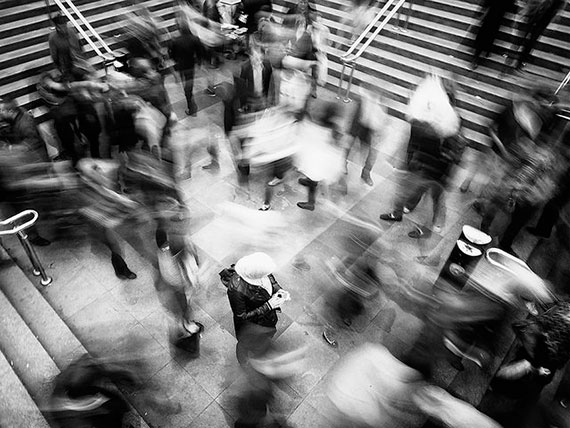The fans are screaming; the Bulls have the ball, and you are following number 23 as he approaches the basket. He jumps, he shoots … you score! You did get that picture just as the ball left his fingertips, didn’t you? If you got that Sports Illustrated cover shot, the ball would be frozen just past the tip of his fingers.
This is the type of fast paced action shot that most photographers think about when they are trying to show motion in their photos; but it is not the only way to show motion. Think about it for a moment. If you were watching a wind mill on a windy day, how would those blades look? If they were frozen in mid air like the basketball, you wouldn’t be able to tell if there was actually any wind that day or not.
If you were shooting a NASCAR race and got a single car high up on the edge of a curve, do you really want it 100% stop motion, razor sharp? I would say no. Why? Because if you took the picture the way it was just described, it could just be parked on the track for all anyone knows.
Obviously, stopping motion is not the only way to show motion. If you want to freeze things in mid air, think fast shutter speed or electronic flash. If you want some blur in the image, think slower shutter speed and a tripod.

Photo by Tuncay; ISO 200, f/22.0, .8-second exposure.
When we say slow, we mean slow compared to the speed of the subject. For example, if we are talking about a NASCAR car that goes 200 miles per hour, even 1/250 of a second might be slow enough to catch some blur. To be on the safe side, I would bracket your exposures to include: 1/500, 1/250, 1/125, 1/60, and 1/30 of a second. The first two or three shots you should be able to hand hold without much problem, but once speeds start getting at 1/60 of a second or slower, it is always safer to use a tripod.
The wind mill may only be blowing at 25mph or slower, so you might still freeze the image at only 1/125 of a second. In this case, you definitely want to use a tripod and shoot at even slower speeds. The reason you use a tripod is so that the rest of the image (other than moving parts) will photograph sharp and crisp.
So far we have only mentioned two basic choices:
A) the subject is frozen in mid air (commonly referred to as Stop Action)
B) the subject deliberately shows some blur to indicate movement.
There is a third choice which is not so basic. This choice is called panning. Panning involves using a slower shutter speed, but moving with (or panning with) the subject as it goes by. This makes the subject clear but the background blurry. It is very effective in showing motion, but it does take a lot of practice. Panning can be done with or without a tripod. But the cleanest pan shots I have ever seen were taken with a tripod.
You can also combine effects. For example, I once shot a dance where there were several photographers using flash. I was trying a timed exposure of a young lady coming down a circular stair case. Right at the end of my exposure, a flash went off. The end result was really quite amazing. The ghost image of the girl walking slowly down the stairs became crystal clear when she paused at the bottom step and the flash went off.

Photo by Sophia Purbasari; ISO 100, f/18.0, 1/15-second exposure.
There is no one way that is right or wrong to capture motion. Sometimes we see motion using stop action; sometimes we do it with a deliberate blur. Blur can be fractions of a second, or it can be several minutes long. If you have ever seen waterfall shots with the white dreamy flowing water, it was exposed for several seconds or minutes with a tripod. The choice of how you shoot movement determines how you view movement. Next time you automatically think “stop action” try a few blur shots as well; you might be surprised at the results.
About the Author:
Award winning writer / photographer Tedric Garrison has 30 years experience in photography (better-photo-tips.blogspot.com). As a Graphic Art Major, he has a unique perspective. His photo eBook “Your Creative Edge” proves creativity can be taught. Today, he shares his wealth of knowledge with the world through his website.
Like This Article?
Don't Miss The Next One!
Join over 100,000 photographers of all experience levels who receive our free photography tips and articles to stay current:





Leave a Reply